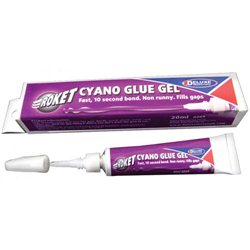There are tens of thousands of decals available covering a multitude of different models from trains, planes and...
No products
Product successfully added to your shopping cart
There are 0 items in your cart. There is 1 item in your cart.
Search Tips
How to remove super glue (cyanoacrylate)?
Cyanoacrylate is best known as super glue.
The best way to remove it is with acetone or an acetone-based product such as nail varnish remover, this will soften the super glue.
In the eventuality of getting super glue on your skin follow manufacturers guidelines. But basically, wash the glued area with warm soapy water then with a cotton bud dipped in acetone apply to affected area, this will soften the glue to allow it to be peeled off.
Removal of super glue from plastic.
Some plastics do not react well to acetone or associated products. So be very weary when attempting to remove the super glue, I would suggest trying it on a piece of scrap plastic such as the sprue the plastic was connected to.
If the acetone has an adverse effect do not continue with the removal process.
If the acetone is OK on the practice piece, apply a small amount of acetone to a cotton bud and once the glue has softened peel it away.
There are products available from model shops, these are called de-bonders, but make sure that they contain nitromethane as this is the chemical that will break down the superglue.
Click here to receive the tips weekly in your mailbox. You can unsubscribe at any time.










